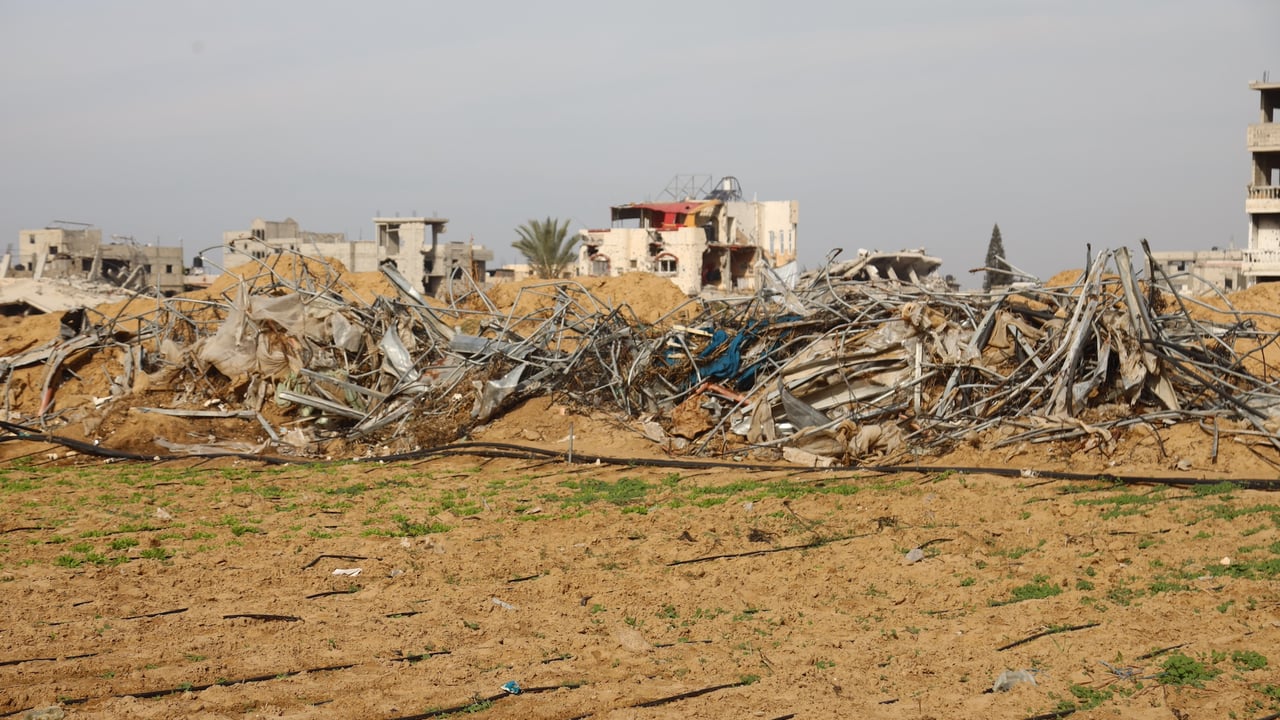FAO: Less than 5% of cropland in Gaza available for cultivation
Less than 5% of the Gaza Strip's cropland area remains available for cultivation, according to the latest geospatial assessment by the Food and Agriculture Organisation of the United Nations (FAO).
According to the FAO, as of April 2025, 12,536ha out of 15,053ha, more than 80%, of the Gaza Strip's total cropland has been damaged, and 77.8% is not accessible to farmers, leaving just 688ha available for cultivation.
The FAO said the situation is particularly critical in Rafah and in the northern governorates, where nearly all cropland is not accessible.
Using high-resolution satellite imagery and comparing against pre-conflict baselines, the assessment also found that 71.2% of the Gaza Strip’s greenhouses have been damaged.
Agricultural wells have not fared better, with 82.8% of them damaged across the Gaza Strip. That figure stood at around 67.7% in December 2024.
The FAO believes that before the start of the conflict, agriculture accounted for approximately 10% of Gaza’s economy, with more than 560,000 people relying entirely or partially on crop production, herding, or fishing for their livelihoods.
The deputy director general of the FAO, Beth Bechdol said: "This level of destruction is not just a loss of infrastructure – it is a collapse of Gaza’s agrifood system and of lifelines.
"What once provided food, income, and stability for hundreds of thousands is now in ruins. With cropland, greenhouses, and wells destroyed, local food production has ground to a halt."
"Rebuilding will require massive investment—and a sustained commitment to restore both livelihoods and hope," Bechdol explained.
Earlier this year, 2025, the FAO estimated that the total value of damages and losses experienced by the agricultural sector in Gaza since hostilities began, in 2023, was over $2 billion (€1.7 billion), with recovery and reconstruction needs estimated at $4.2 billion (€3.69 billion).
The FAO believes that with the breakdown of the ceasefire, these figures will undoubtedly have risen further, underlining the huge challenge of rebuilding the livelihoods of farmers, livestock owners and fishermen across the Gaza Strip.
The latest assessment from FAO and UNOSAT follows the release of a new Integrated Food Security Phase Classification analysis, which warns that the entire population of the Gaza Strip – approximately 2.1 million people – is facing a critical risk of famine following 19 months of conflict, mass displacement, and severe restrictions on humanitarian aid.





